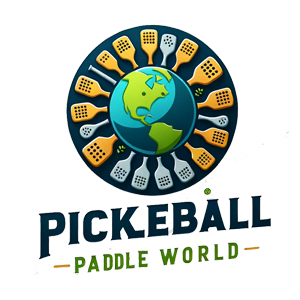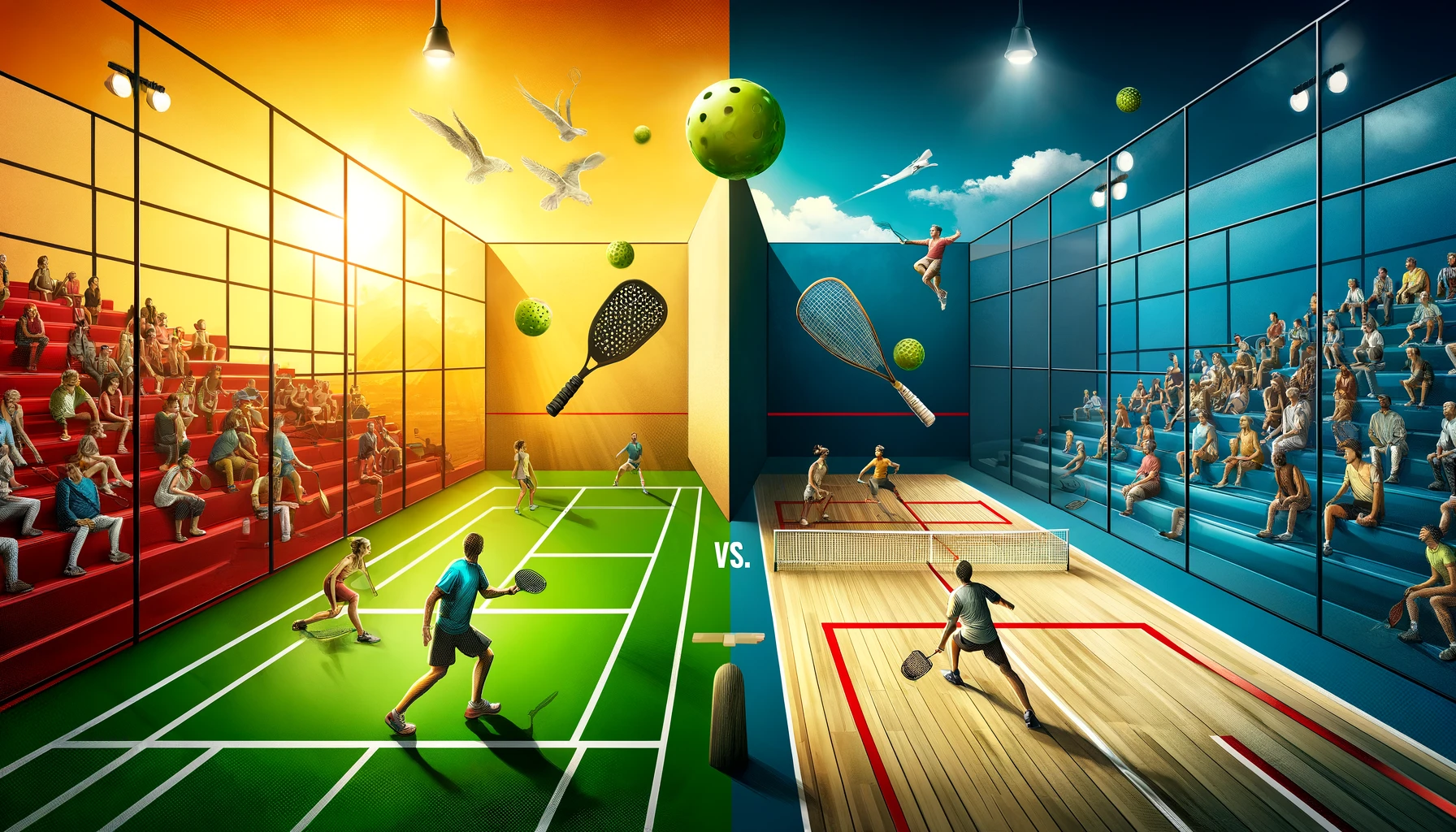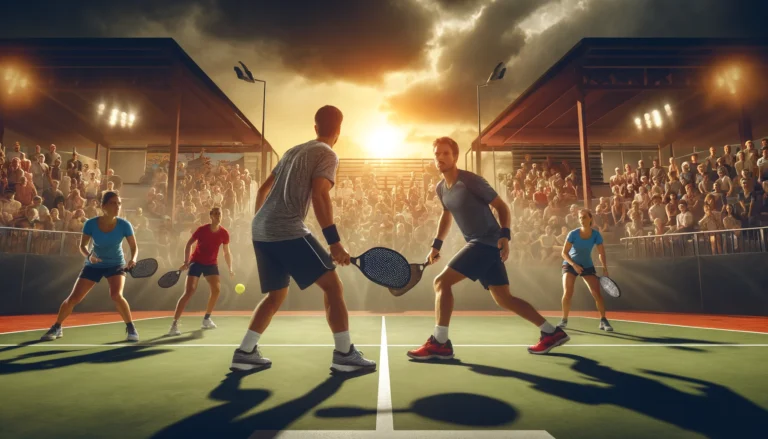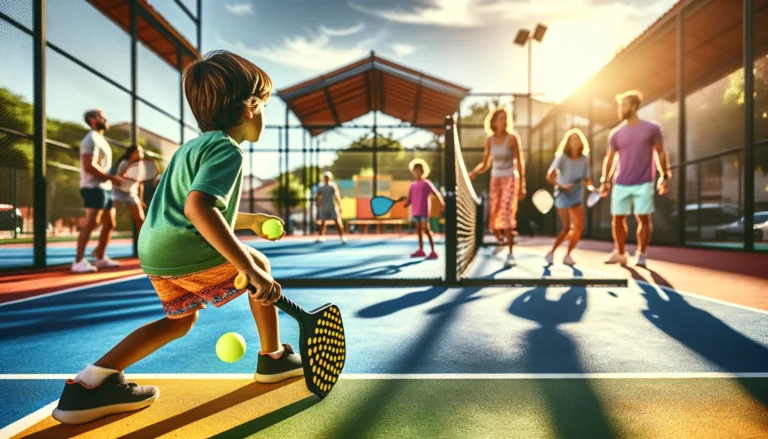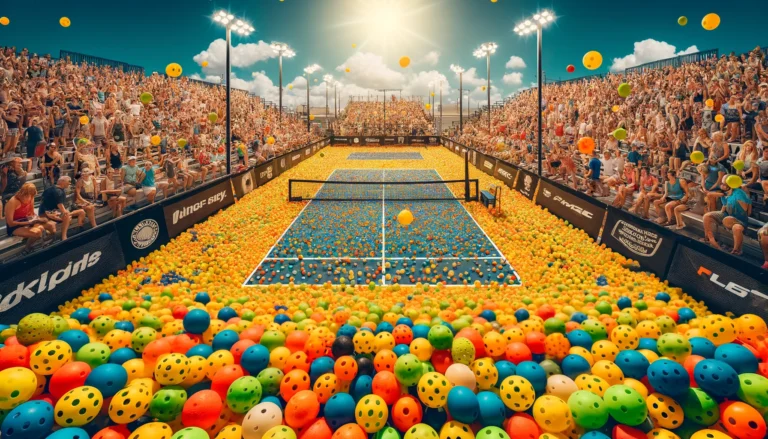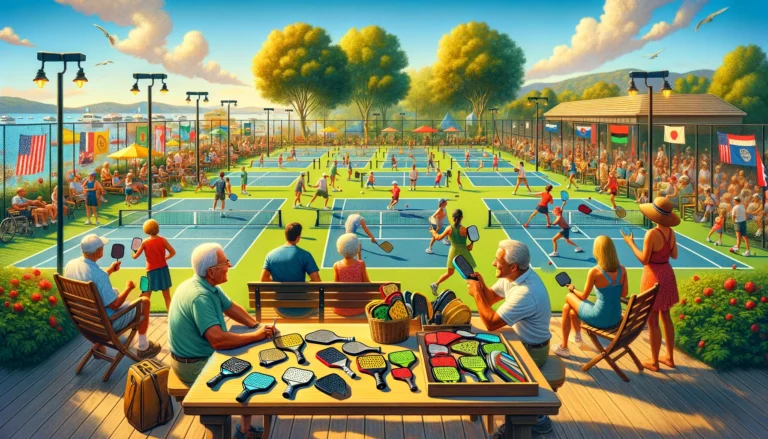Pickleball vs Squash: Which Sport is Right for You?
Pickleball vs Squash:
Two racquet sports that are gaining popularity worldwide. Understanding the differences and similarities between these two sports can help enthusiasts decide which game suits their interests and fitness goals better. Will delve into every aspect of pickleball and squash to give you a comprehensive comparison.
In this blog, we will explore the origins, rules, equipment, playing styles, health benefits, and social aspects of both pickleball and squash. By the end, you’ll have a clear picture of what each sport entails and which might be the best fit for you.
Whether you’re a seasoned player or a beginner looking to pick up a new sport, this guide will provide valuable insights into pickleball vs squash. You’ll learn about the unique features of each sport and gain a deeper appreciation for what makes them both exciting and challenging.
Origins and History
The Evolution of Pickleball
Pickleball originated in 1965 on Bainbridge Island, Washington, when Joel Pritchard, Bill Bell, and Barney McCallum sought to create a family-friendly game. Using elements from badminton, tennis, and table tennis, they crafted a unique sport that quickly gained popularity. The simplicity of the rules and the minimal equipment required made pickleball accessible to a wide audience.
The Rich Heritage of Squash
Squash, on the other hand, dates back to the early 19th century. Originating in the prestigious Harrow School in England, it was initially called “squasher” because of the soft rubber ball used. The game evolved over time, with formal rules being established and the sport spreading globally. Squash’s rich heritage is reflected in its enduring popularity and the establishment of professional leagues and tournaments.
Comparing Historical Development
While both sports have distinct origins, they share a common trait: rapid growth and global reach. Pickleball’s modern roots and inclusive nature contrast with squash’s deep-seated traditions and competitive environment. Understanding these historical contexts enhances appreciation for each sport’s unique journey.
Rules and Gameplay
Basics of Pickleball
Pickleball is played on a court similar in size to a badminton court, with a net slightly lower than that of tennis. The game can be played in singles or doubles. Players use paddles to hit a perforated plastic ball over the net. The rules are straightforward: the ball must bounce once on each side before volleys are allowed, and the first side to reach 11 points with at least a 2-point lead wins.
Fundamentals of Squash
Squash is played in an enclosed court with four walls, using a small rubber ball and racquets. Unlike pickleball, squash involves continuous play without breaks for serves, making it a high-intensity sport. Players take turns hitting the ball against the front wall, ensuring it lands within the marked boundaries. Points are scored when the opponent fails to return the ball properly. Matches are typically played to 11 points, with a win by 2 points.
Key Differences in Gameplay
The primary differences between pickleball and squash lie in their playing environments and equipment. Pickleball’s outdoor and indoor versatility contrasts with squash’s indoor-only setting. The nature of the balls used also impacts gameplay: pickleball’s slower, more controlled rallies differ from squash’s fast-paced, reactive exchanges. Understanding these differences can help players choose based on their preferences for intensity and style.
Equipment and Court Dimensions
Pickleball Gear
Pickleball requires minimal equipment: a paddle, a plastic ball with holes, and a net. Paddles can be made of wood, composite, or graphite, with each material offering different benefits in terms of weight and control. The court dimensions are 20 feet wide and 44 feet long, with a non-volley zone known as the “kitchen” extending 7 feet from the net on each side.
Squash Essentials
Squash equipment includes a racquet, a rubber ball, and proper footwear for grip on the court. Racquets are lighter and longer than pickleball paddles, allowing for swift, precise shots. Squash courts measure 21 feet wide and 32 feet long, with varying ceiling heights. The walls play a significant role in gameplay, with specific markings indicating valid shot zones.
Comparing Equipment and Court Layouts
The equipment and court dimensions of pickleball and squash highlight their unique gameplay experiences. Pickleball’s simplified gear and open court design promote accessibility and social play, while squash’s specialized equipment and enclosed space foster intense, strategic matches. This comparison aids in understanding the logistical and practical considerations of each sport.
Playing Styles and Strategies
Pickleball Tactics
Pickleball emphasizes placement and patience. Players often engage in dinking, where they gently hit the ball just over the net to force opponents into difficult positions. Mastery of the kitchen rule is crucial, as it dictates the flow of volleys and groundstrokes. Doubles play introduces teamwork dynamics, requiring coordinated movements and communication.
Squash Techniques
Squash demands agility and quick reflexes. Players utilize a variety of shots, including drives, drops, and lobs, to outmaneuver opponents. Control over the T-zone, the central area of the court, is vital for maintaining a dominant position. The constant motion and need for quick decision-making make squash a mentally and physically challenging sport.
Comparing Strategic Elements
Both pickleball and squash require strategic thinking, but their approaches differ significantly. Pickleball’s slower pace allows for deliberate shot placement and extended rallies, while squash’s high speed necessitates rapid responses and endurance. Understanding these strategic elements can help players appreciate the distinct mental and physical demands of each sport.
Health Benefits
Physical Fitness from Pickleball
Pickleball offers a balanced workout, combining aerobic exercise with strength and flexibility training. The moderate intensity suits players of all ages and fitness levels, making it an excellent option for maintaining overall health. Regular play improves cardiovascular health, coordination, and muscle tone.
Squash as a High-Intensity Workout
Squash is renowned for its rigorous physical demands. The sport provides a full-body workout, enhancing cardiovascular endurance, strength, and agility. The constant movement and explosive bursts required in squash contribute to significant calorie burn and improved muscular fitness.
Mental and Social Benefits
Both sports offer mental and social advantages. Pickleball’s social nature fosters community engagement and reduces stress, while squash’s strategic depth enhances cognitive function and problem-solving skills. Participating in either sport can lead to increased mental well-being and social connections.
Social and Community Aspects
The Pickleball Community
Pickleball has a reputation for being inclusive and welcoming. Its rapid growth has led to a strong community presence, with clubs, tournaments, and social events becoming commonplace. The sport’s appeal to a wide demographic, including seniors, promotes social interaction and camaraderie.
Squash’s Competitive Scene
Squash attracts a competitive crowd, with a well-established network of leagues and tournaments at various levels. The sport’s intensity and skill requirements create a tight-knit community of dedicated players. While it may seem exclusive, the squash community offers ample opportunities for socialization and networking.
Comparing Social Dynamics
The social dynamics of pickleball and squash differ, reflecting their unique cultures. Pickleball’s inclusive, recreational atmosphere contrasts with squash’s competitive, performance-oriented environment. Understanding these social aspects can help players choose a sport that aligns with their personal preferences and goals.
Accessibility and Cost
Entry-Level Pickleball
Pickleball’s low-cost equipment and minimal court requirements make it highly accessible. Public courts are often available in parks and recreational centers, and equipment can be purchased at a reasonable price. This affordability encourages widespread participation.
Squash Accessibility
Squash, while slightly more expensive due to specialized courts and equipment, remains accessible through clubs and fitness centers. Memberships and court fees vary, but many facilities offer introductory programs to attract new players. Investing in quality gear can enhance the playing experience and longevity of the equipment.
Comparing Accessibility and Costs
The accessibility and cost of pickleball and squash can influence a player’s decision. Pickleball’s affordability and ease of access make it appealing to beginners and casual players. Squash, while more costly, provides a structured environment with high-quality facilities. Weighing these factors can help individuals choose a sport that fits their budget and lifestyle.
Q&A: Keywords Related + Questions
Frequently Asked Questions About Pickleball vs Squash
Q: What are the main differences between pickleball and squash?
A: The main differences lie in the playing environment, equipment, and gameplay intensity. Pickleball is typically played on a smaller, open court with a plastic ball and paddles, while squash is played in an enclosed court with a rubber ball and racquets.
Q: Which sport is easier for beginners to learn, pickleball or squash?
A: Pickleball is generally easier for beginners due to its simpler rules and slower-paced gameplay. The equipment is also more straightforward and less expensive, making it accessible to a wider range of people.
Q: What are the health benefits of playing pickleball?
A: Pickleball offers cardiovascular exercise, improves coordination, enhances muscle tone, and provides a moderate-intensity workout suitable for all ages. It also promotes social interaction and reduces stress.
Q: How does the intensity of squash compare to pickleball?
A: Squash is a high-intensity sport that demands quick reflexes, agility, and endurance. The fast-paced nature of the game and continuous play make it more physically demanding compared to the more controlled and strategic play of pickleball.
Q: Are there any specific skills required to play squash that are not needed for pickleball?
A: Yes, squash requires skills such as quick lateral movement, precise shot placement, and strategic use of the walls. The game’s pace also demands higher cardiovascular fitness and faster reaction times compared to pickleball.
Q: Can pickleball be played both indoors and outdoors?
A: Yes, pickleball can be played both indoors and outdoors, making it a versatile sport. Courts can be found in parks, recreational centers, and dedicated pickleball facilities.
Q: What is the cost difference between getting started with pickleball and squash?
A: Getting started with pickleball is generally less expensive due to the minimal equipment needed and the availability of public courts. Squash requires more specialized equipment and access to dedicated squash courts, which can be more costly.
Q: How do the social aspects of pickleball compare to squash?
A: Pickleball tends to be more social and inclusive, with a strong community atmosphere and frequent social events. Squash, while also having a dedicated community, is more competitive and focused on performance.
Q: What types of courts are used for pickleball and squash?
A: Pickleball is played on a court similar in size to a badminton court, with a net slightly lower than that of tennis. Squash is played in an enclosed court with four walls, which are integral to the gameplay.
Q: How can playing either sport improve mental health?
A: Both sports offer mental health benefits. Pickleball’s social nature reduces stress and fosters community engagement. Squash enhances cognitive function through strategic play and problem-solving, providing a mental workout along with physical exercise.
Last Words
Pickleball vs Squash presents an intriguing comparison of two dynamic racquet sports. Each sport offers unique gameplay experiences, health benefits, and social environments. Pickleball’s accessibility, social nature, and moderate intensity make it a popular choice for a wide audience. In contrast, squash’s competitive edge, intense workout, and strategic depth attract dedicated athletes seeking a challenging sport.
Whether you prefer the strategic finesse of pickleball or the high-octane action of squash, both sports provide opportunities for physical fitness, mental engagement, and social interaction. By understanding the distinctive characteristics and benefits of each sport, you can make an informed decision and enjoy the numerous advantages of participating in racquet sports.
We hope this comprehensive comparison has provided valuable insights into pickleball vs squash. Feel free to share your thoughts in the comments, join our newsletter for more articles like this, and explore related topics on our site. Happy playing!
